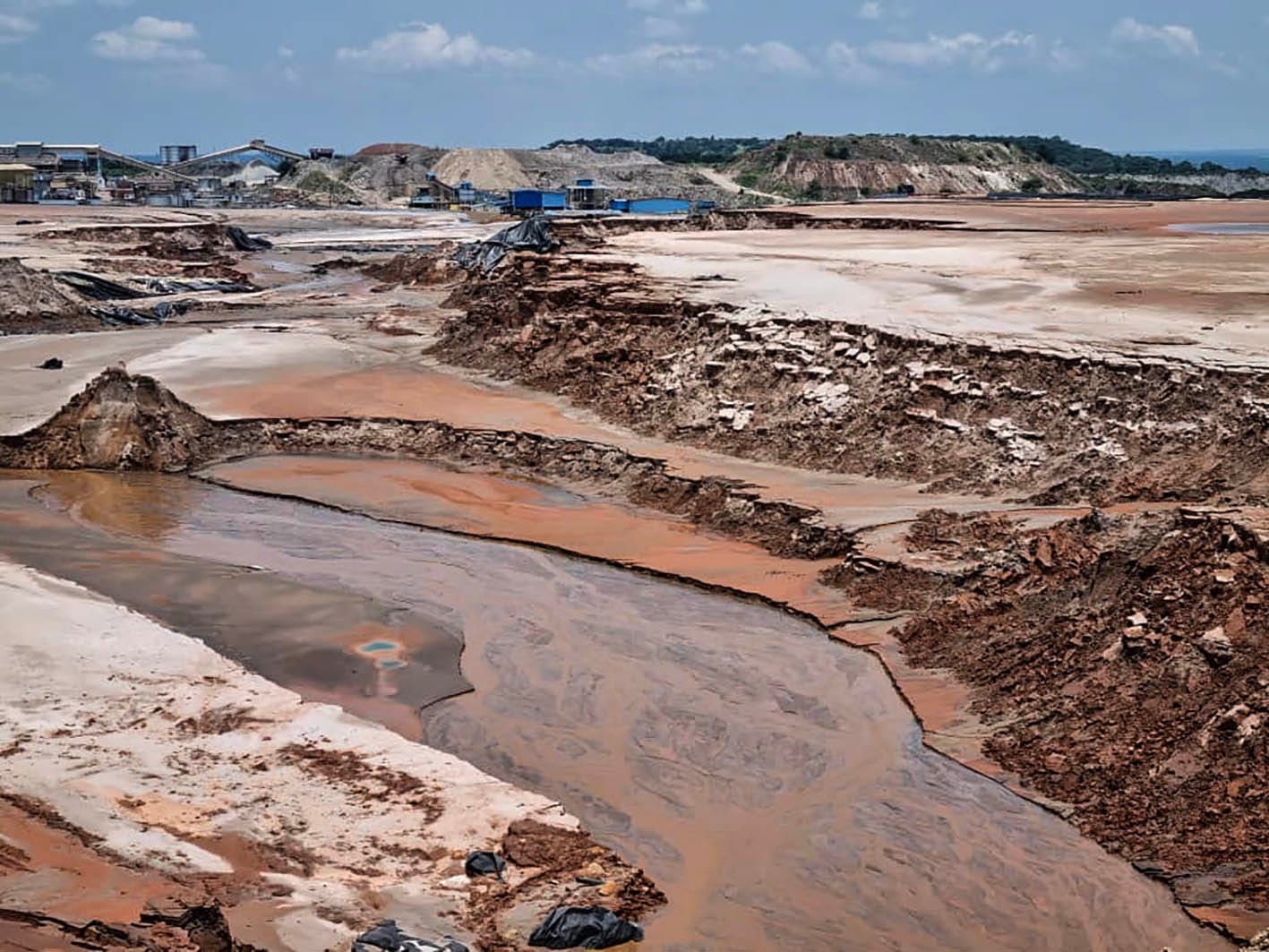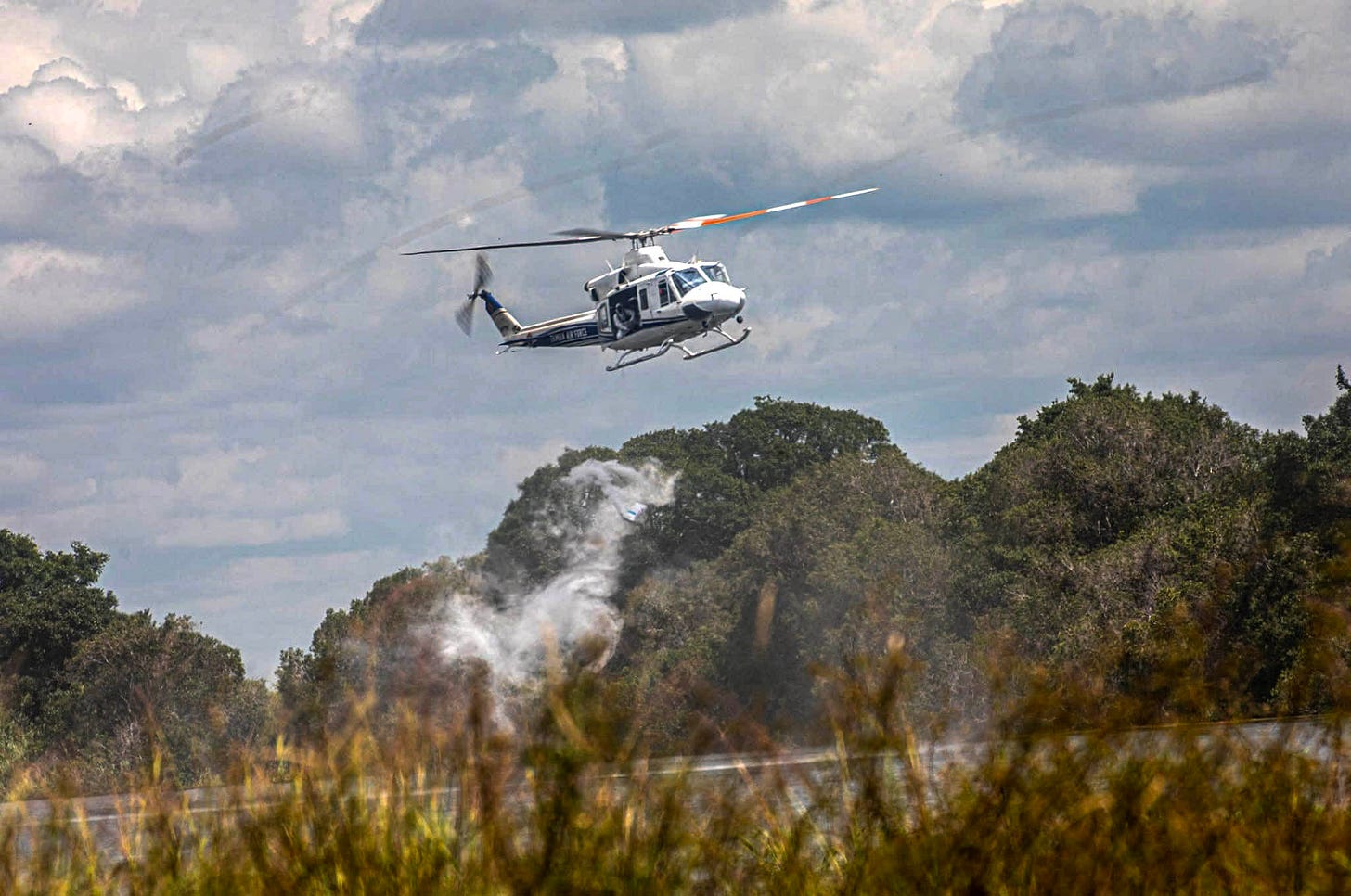Rivers of acid
There are 50-million litres of acidic sludge coursing through Zambia’s river network. This was a man-made disaster, but will anyone clean up the toxic mess?
Olga Manda in Lusaka
An estimated 2% of all the world’s copper reserves can be found in Zambia. For more than a century, foreign mining companies have flocked to its Copperbelt region to extract this precious resource – often leaving environmental devastation in their wake.
The latest disaster happened in the mining town of Chambishi, on 18 February, when a waste storage dam at a Chinese-run copper operation collapsed.
The broken dam discharged over 50-million litres of acidic sludge, about three-quarters of what it held, into the Mwambashi River. This made the water so acidic that entire schools of fish began dying within a day of the disaster, their bodies floating onto the riverbanks.
Authorities poured 250 tonnes of lime into the river at three points, in an effort to neutralise the acid, but initial readings from the Environmental Management Authority showed only a negligible improvement. Maize fields along the river banks were also scorched by the acid water.
The Mwambashi pours into the Kafue River, which runs through five Zambian provinces and is a key water source for millions of people and wildlife. Within two days, water companies as far downstream as Kitwe – 50km from the disaster site – had cut supply to their customers, fearing the contamination of the river system.
By 24 February, people were reporting sightings of dead or gasping fish near river banks some 240km from the mine. At this point, Sino-Metals Leach Zambia Limited, the company whose dam burst, was throwing bags of lime off bridges on the river system.
But anxiety was growing that the Zambezi River, into which Kafue pours, would soon be contaminated too. The Zambezi, Africa’s fourth longest river, flows from Zambia through Angola, Namibia, Botswana and Mozambique before pouring into the Indian Ocean. The Zambian Air Force got involved. By early March, its helicopters were flying over the river, chasing the acidic plume that was heading down the river at 1km/h, pouring lime from the sky.
Rare pushback
As responders battled to control the pollution, public anger was rising.
“This crisis demands more than just emergency interventions. It requires a long-term, justice-driven approach to hold polluters accountable,” Maggie Mwape, the executive director of the Centre for Environmental Justice, told The Continent.
The February disaster was “symptomatic of a broader pattern of gross corporate negligence and inadequacies in the environmental compliance, oversight and enforcement,” said Timothy Phiri, speaking for a new consortium that 10 leading environmental groups have formed to react to the disaster. “These avoidable disasters have devastated communities in Chambishi, Kitwe, Luanshya and Mumbwa districts.”
Their voices were joined by others in the local press and on social media, calling for heads to roll over the disaster and wider violations of environmental standards.
Sino-Metals’ operations were suspended shortly after authorities learnt of the burst dam and officials started impromptu inspections at other mines. A team of ministers stormed a separate Chinese-owned leach plant, Rongxing Mineral Processing Limited in Kalulushi, for an impromptu inspection. They shut it down, saying that its storage dams were leaking sulphuric acid into local streams including the Lulamba River, which also feeds into the Kafue River.
“Let this serve as a warning to all investors and government officials: we will not tolerate environmental impunity,” said Water Minister Collins Nzovu. “Noncompliance will result in severe penalties, prosecution, and imprisonment.”
This is an unusually strong stance from Zambia’s government, which enjoys close economic relations with China. The Asian superpower holds at least $4.1-billion of Zambia’s $13-billion external debt and reportedly funds at least 26 copper projects in the country, bringing in up to $260-million in taxes a year. This buys certain privileges – including, all too often, meekness from public officials.
In recent years, President Hakainde Hichilema has walked a delicate path with China as he has attempted to renegotiate debts to more sustainable terms. Chinese reluctance was a major factor in why Zambia could not reach a restructuring agreement with its G20 creditors until June 2023, after defaulting in 2020. While payments to all other creditors remained frozen during the impasse, China received a $80-million payment. Zambian authorities say it was accidentally sent.
The February disaster has put Beijing on the defensive in Lusaka. China’s deputy ambassador said independent consultants would be brought in to assess the impact of the pollution. An official Chinese delegation also flew into the capital over the weekend to manage the fallout. After travelling to the disaster site, the delegation – whose composition has not been disclosed – held a closed door meeting with Zambian officials, including Nzovu, the irate water minister, on Thursday afternoon. Details of the meeting have not been made public.
Dirty history
Despite robust environmental laws on Zambia’s books, they are rarely effectively policed, and community complaints against them are not taken seriously. In 2011 and 2015, communities in the Copperbelt sued Sino-Metals – the company whose dam has now burst – for destroying their fields. The cases remain in judicial limbo. But Sino-Metals is facing a new lawsuit in relation to the recent disaster: it is being sued by a private firm, Panthera Ventures Limited, which wants it closed over the environmental damage.
It is not just Chinese companies: the practice of foreign companies extracting precious resources while damaging the environment has a long and dirty history in Zambia. UK-based Vedanta Resources was sued in 2015 in a British court by nearly 2,000 Zambian villagers after another dam collapse turned water sources toxic and poisoned farmland. The dam was connected to a copper mine owned by a Vedanta subsidiary.
After years of legal battles, Vedanta was forced to offer an undisclosed settlement to the affected communities. For his role in organising the lawsuit, environmental activist Chilekwa Mumba won the 2023 Goldman Environmental Prize.
Dr Pamela Sambo, an environmental law and human rights expert from the University of Zambia said the Sino-Metals dam collapse disaster “underscores usual historical gross carelessness and dereliction of duty by regulators who prioritise mining profits over environmental protection”.







